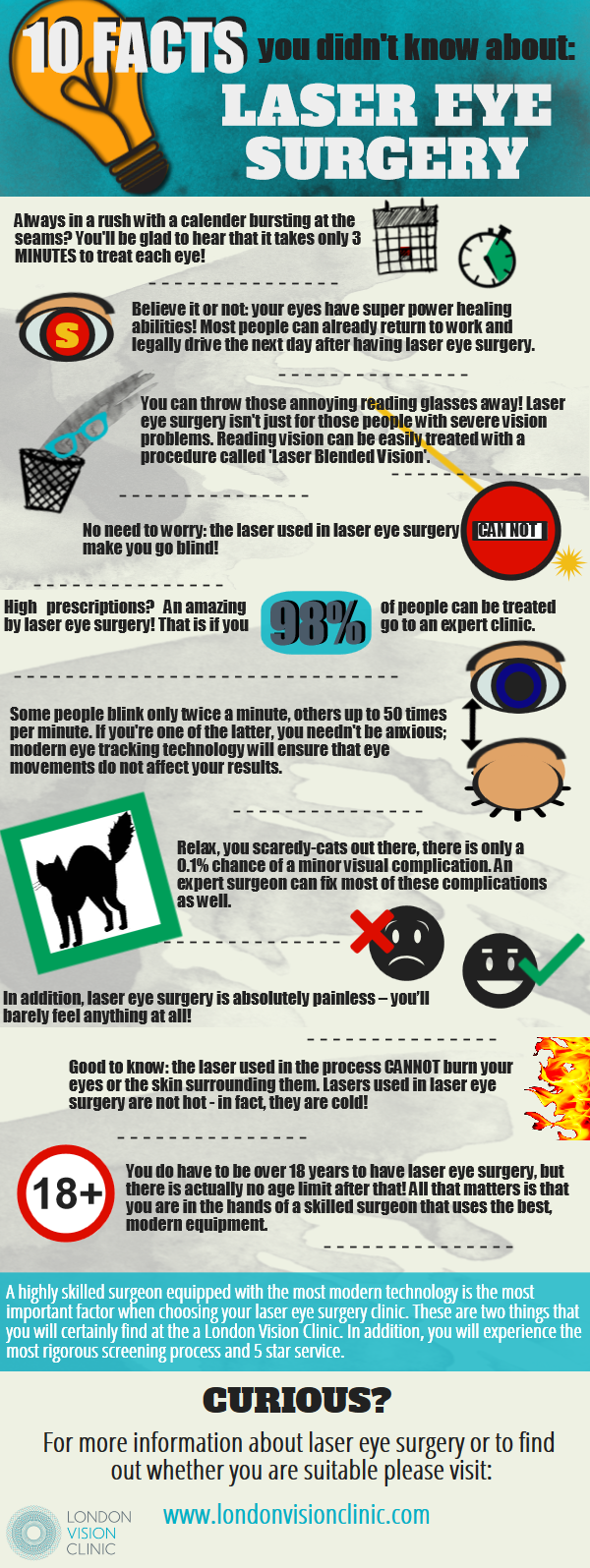Refractive Lens Exchange Explained: What Your Ophthalmologist Isn't Informing You

Content By-Bilde Schofield
Have you ever before took into consideration Refractive Lens Exchange (RLE) as a choice for vision improvement? While it isn't as widely reviewed as LASIK, RLE could be a game-changer for your sight. Many people neglect its advantages, thinking conventional approaches are their only selection. But what are the actual advantages, and what might your eye doctor not be telling you about this procedure? Let's explore High-tech Lasik Solutions and outs of RLE with each other.
Understanding Refractive Lens Exchange: The Essentials
Refractive lens exchange (RLE) is a surgery that can considerably boost your vision, specifically if you're handling presbyopia or extreme refractive mistakes.
During RLE, your eye cosmetic surgeon eliminates your eye's natural lens and replaces it with an artificial one customized to your vision needs. mouse click the following post can remedy nearsightedness, farsightedness, and astigmatism, giving you more clear vision without counting on glasses or contact lenses.
The surgical procedure is normally quick, taking less than an hour, and the majority of patients experience marginal discomfort. Recovery is fairly quick, enabling you to return to your everyday tasks quickly after.
If you're considering RLE, consulting with your ophthalmologist can aid you figure out if it's the appropriate choice for you.
Trick Distinctions Between RLE and Typical Cataract Surgical Procedure
While both refractive lens exchange (RLE) and traditional cataract surgical procedure include changing the eye's all-natural lens, their key goals and client accounts differ considerably.
RLE is targeted at individuals looking for to lower their dependancy on glasses or call lenses as a result of refractive errors, commonly prior to cataracts develop. On the other hand, typical cataract surgical procedure generally targets clients that have actually created cataracts, which cloud the lens and harm vision.
The lenses used in RLE can provide a more comprehensive range of vision adjustment, while common cataract surgical treatment usually involves fundamental monofocal lenses.
In addition, RLE candidates are typically more youthful and in good overall wellness, whereas cataract individuals may be older and have various other wellness concerns.
Choosing the appropriate procedure depends upon your specific vision needs and conditions.
Possible Benefits and Factors To Consider of RLE
If you're thinking about refractive lens exchange (RLE), you'll discover several possible advantages that might improve your lifestyle.
RLE can give you with clearer vision, decreasing or removing the need for glasses or get in touch with lenses. It offers a chance to resolve presbyopia and other refractive errors all at once, commonly enhancing your overall visual acuity.
In addition, RLE can be a great option if you're not an ideal candidate for LASIK. Nevertheless, it is essential to consider the factors to consider, like the expense, potential threats, and the recuperation period.
Discussing your particular needs with your ophthalmologist can help you make an educated choice, guaranteeing you select the very best path for your vision adjustment.
Conclusion
To conclude, refractive lens exchange uses a special remedy for vision correction that goes beyond what LASIK can offer. It's necessary to consider the advantages versus possible risks and expenses prior to deciding. Don't be reluctant to ask your ophthalmologist the difficult questions to ensure you fully understand the procedure and its ramifications for your vision. With the best information, you can with confidence choose the most effective option for your eyes and way of life.

